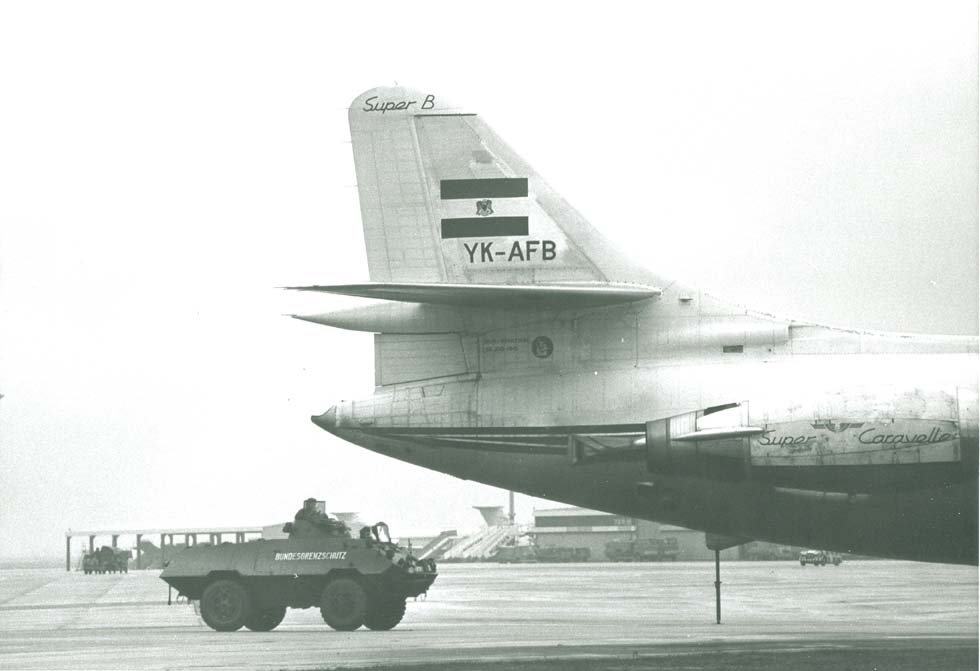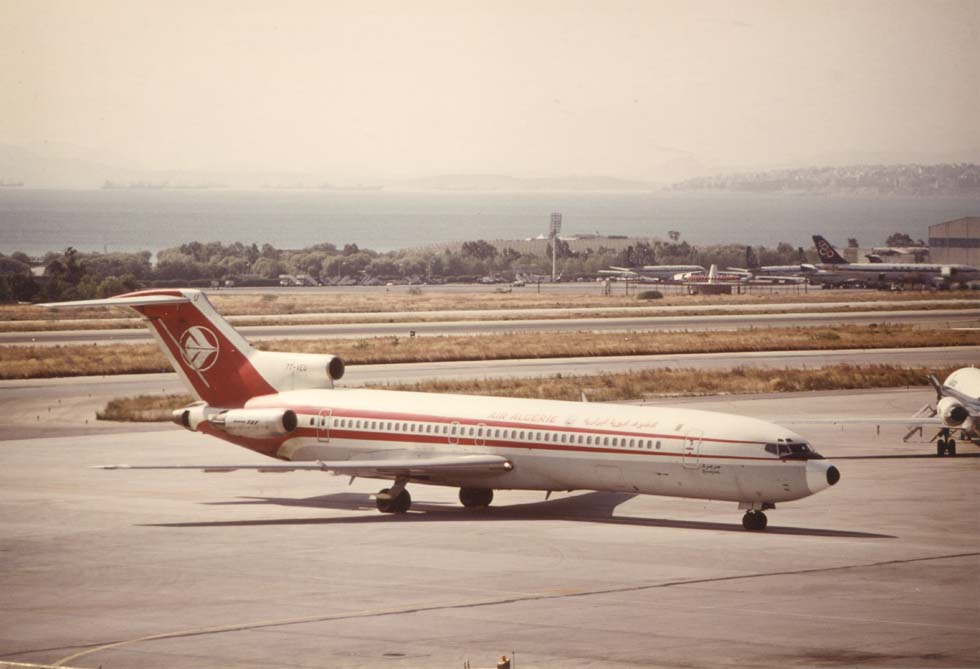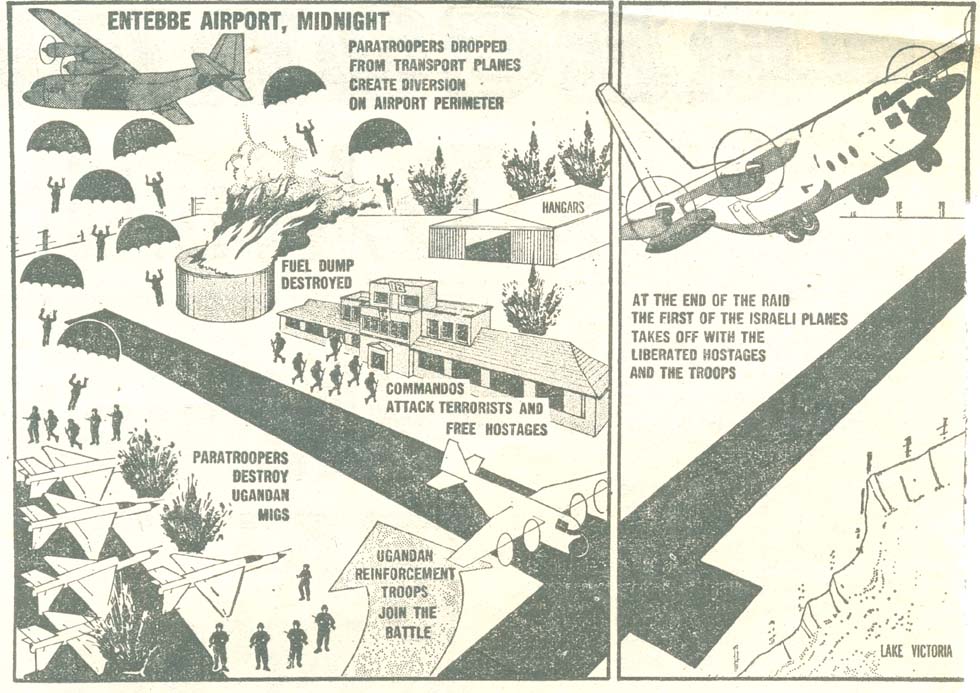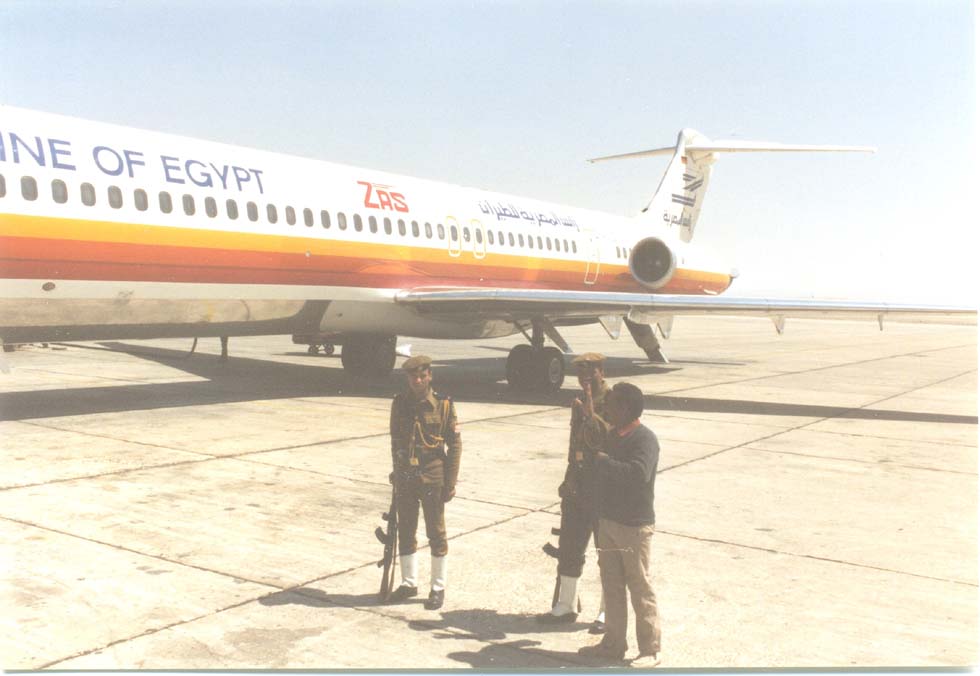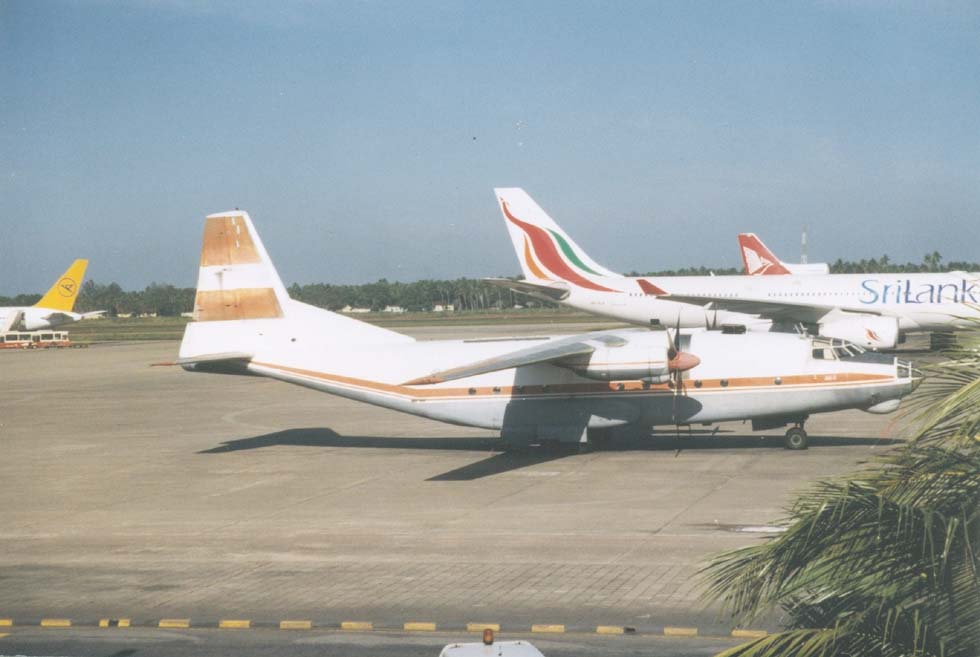|
Terrorism
02-16-10 Terrorism Menacing Air Traffic, last updated 2018 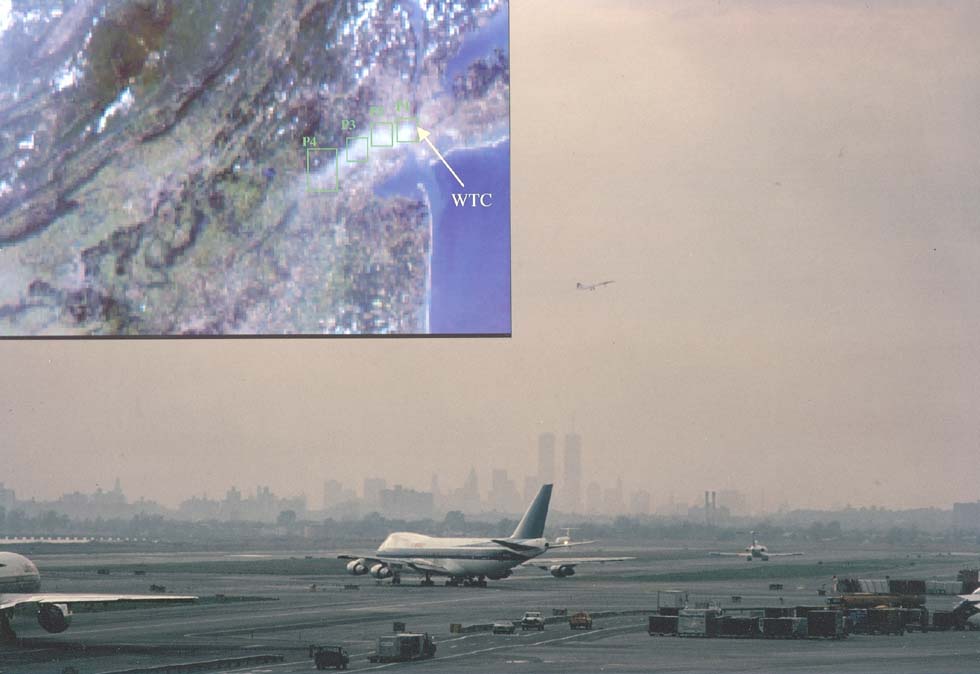 The way of the smoke plume of 9/11 (courtesy NASA) and the New York JFK before, in 1987, the World Trade Center towers in the background, an El Al B.747 cargo in the foreground, and the Concorde in the sky (WS) Terrorism misusing the religions is an absurdity, for Muslims, Christians and Jews have their common belief in one God and they are honoring the Commandments of Moses, who forbade killing. From WWII the story of a German second-ranking military unit was reported, having got order to kill civilians in Poland, and a small percentage among these soldiers confessed after the war that finally they enjoyed killing. Is this a collective psycho-analytical explanation also of terrorism? Compare Sigmund Freud’s ‘Group Psychology and the Analysis of the Ego’. Initially, simply hijacking aircraft was the tactic, facilitated by non-existence of security controls. In 1969 during one year 91 airliners were abducted, without any political result. Mideast Terrorism Terrorism had become a threat to airlines already in 1968, when an El Al jetliner was hijacked by terrorists for six weeks. In 1970 the blowup of a Swissair Coronado on a Zurich - Tel Aviv flight was (according to LJ) planned as an attack on an El Al Munich – Tel Aviv flight. Also the destruction of a Pan Am 747 at Cairo and the destruction of a BOAC VC-10, a DC-8 and a 707 by rebels at Dawson Field in Jordan shocked the media. After the killings during the Olympic games at Munich in 1972, a Lufthansa B.727 on a Beirut flight was kidnapped, three imprisoned terrorists had to be handed over, they were brought by a Hawker-Siddeley to Zagreb and boarded there the kidnapped 727, which had to carry them together with the hostages to Tripoli in Libya. In the year 1972, a Lufthansa 747 on a Tokyo – Delhi – Frankfurt flight was abducted to South Yemen, at that time nicknamed “the 16th Soviet Republic”. In 1973 an Israeli Phantom accidentally shot down a Libyan 727 over the Sinai desert. A JAL 747 was destroyed at Benghazi in Libya, and other hijackings on the South East Asia route and in Egypt followed. In 1985 four killers, who had captured the steamer “Achille Lauro” near Alexandria, were flown out by an Egyptair 737. Presumably by arrangement, it was forced by USAF fighters to land at Sigonella, Sicily, but authorities released the boss Abu Abbas. Then the Italian government had to resign and after eighteen years Abbas was captured by US forces in Iraq. On Nov23, 1985 an Egyptair plane was abducted to Malta, after waiting 24 hours Egyptian special units stormed the aircraft and 64 people died. On June27, 1980 an Itavia DC-9, started at Bologna with 77 passengers aboard, was shot down near Ustica Island at the same hour when Libya’s al-Qadhafi passed on a Warsaw flight. Later the wreckage of a Libyan MiG fighter was found in Italy. Had somebody order to kill Qadhafi? Possibly he could have prevented the explosion of a Pan Am 747 on Flight 103 over Lockerbie in Scotland on December21, 1988, which killed 270 people. The massacre was carried out by Libyans, though some sources supposed that it could have been inspired by Iran’s Ruholla Khomeini in revenge for the shooting of an Iran Air A300 by USS “Vincennes” (Der Spiegel 28/1997). The former Libyan intelligence official Ali al-Megrahi was sentenced, but in 2007 a Scottish Commission entitled him to challenge the verdict. The commission’s findings “centered on evidence relating to purchases of clothing at a shop (…) in Slieman, Malta on Dec07, 1988, and allegedly wrapped around the bomb” (Herald Tribune, June29, 2007). Megrahi was released on account of suffering from cancer and he died. Terrorism continued anywhere. When in February 2002 a crowd of 7,000 pilgrims gathered at Kabul for a Haj to Makkah, the minister for civil aviation was murdered by the radical Northern Alliance and the Hajis were conveyed by foreign planes (so reported by Airways, Oct 2002).
Mideast to Africa After de Gaulle in 1962 had given up Algeria, the country under socialist president Boumedienne had become a terrorists’ refuge. In 1984 an Air France Airbus was hijacked at Algiers, finally being stormed at Marseilles. Four years later an abducted Kuwait Airways 747 was forced to land at Algiers. Morocco’s revolutionary Ben Barka had been arrested in 1965, arranged by an Air France official and secret service agent. Libya’s al-Qadhafi had ordered to kill all political emigrants abroad and when in 1980 the body of one of them arrived at Tripolis airport, he got no entry permit and the coffin had to be sent back to London by the next plane. In 1981 two bombs, planted at Tripolis on an Air Malta 737 (leased from Transavia), exploded at Cairo. In 1986 Libya got two Airbus A310, sold by British Caledonian via EAS (according to Le Point), though the country was under embargo. Qadhafi, involved in Mideast terrorism, was blamed also for the explosion of a French UTA DC-10 by a terror act over Mali in May 1989. UN sanctions against Libya were suspended in 1999 when Qadhafi surrendered two suspects to UN authorities for a trial.
Middle East terrorism had swept over to Africa when in 1976 an Air France A300 flight ended at Entebbe in Idi Amin’s Uganda, where Israeli special forces freed the hostages. In 2016 it became the story for a movie and a Pakistan International A310, sold as a museum piece, got the F-BVGG label, whereupon politics grew angry about this sacrilege (LJ, Jan 2017). Responsible terror organizer Wadi Haddad was killed by secret service Mossad with a toxic tooth past (according to Ronen Bergman: Der Schattenkrieg). Mideast and German terrorists, residing at Baghdad, plotted the 1977 hijacking of a Lufthansa B.737 at Mallorca, the pilot was shot at Aden and finally the German GSG9 forces liberated the hostages at Mogadishu in Somalia, after chancellor Helmut Schmidt had given the order. In 2017 the plane, stored in Brazil, was bought by Germany for the Dornier Museum. In 2002 an Israeli Arkia 757 narrowly escaped a surface-to-air missile strike at Mombasa, Kenya. A year later, Britain temporarily cancelled East Africa flights after renewed terror warnings. When in 2003 a B.727, leased by Air Angola, disappeared completely, suspicions of a planned 09/11 style attack did arise, though also an insurance fraud was supposed. When in 2003 in Abuja, Nigeria, “Miss World” should have been appointed, enraged terrorists devastated the city, and the beauties had to be flown out to London. R.E.G. Davies reported a heroic story of Air Mauritanie, when on Feb16, 2007, “… a hijacker forced the 737 to land at Las Palmas for refueling. The pilot, like the passengers, spoke French, and realized that the hijacker did not. The pilot announced on the public address system that on landing he would brake suddenly. This drew the hijacker to the floor, the flight attendants doused him with boiling water, and the passengers beat him up.”
Terror in Other Regions The Indo-Pakistan wars of course have nourished terrorism. Pakistan terrorists captured airplanes of PIA, Pan Am and Singapore Airlines. In 1985 Sikh killers did choose a Toronto – Mumbai flight for planting a bomb on an Air India jumbo and the plane crashed near Ireland. The controls were considered being limp. Tamil terrorists decimated Sri Lanka’s fleet, until a ceasefire was signed in 2001. A sort of conflict had arisen in Nepal, where in 2004 “Maoist” killers destroyed some airports - and villages. After Japan had recovered from WWII, it was harassed by its “Red Army” terrorists. In 1972 they chose Israel’s Tel Aviv airport for making a massacre. In 1977 they captured a JAL DC-8 on its way from Paris to Tokyo and threatened to blow it up at Dhaka in Bangladesh. In 1976 hijackers abducted a Philippine Airlines 111 to Bangkok, where they were given a DC-8 for their journey to Libya. In 1981 a Garuda DC-9, captured by Indonesian radicals, finally was stormed at Bangkok. In December 1994 a bomb exploded aboard a Philippine Airlines B.747 on a trans-Pacific flight. The Bali massacre in 2002 did not hit airliners, but it had cost Indonesia more than one billion dollars in lost tourism. Top terrorist Hambali was caught in Thailand. In 2007 the EU excluded Indonesian carriers, only temporarily. North Korea under the Kim dynasty glorified war, worse than terrorism. Nevertheless in 1987 a (South) Korean 707 exploded near Myanmar by a bomb, reportedly planted by a beautiful Asian lady at Bahrain, and an order by Kim Jong-il was imputed. The lady and a gentleman left the plane at Dubai, were captured, took potassium cyanide, he died and she was brought to Seoul. Thirty years later The New York Times reported that US president Reagan had designated “North Korea as a state sponsor of terrorism largely in response to its complicity in a 1987 plane bombing that killed 115 people.” Radicals, not the citizens of Chechnya, have tried to make war on mighty Russia since 1994. President Putin terminated open fighting, but unrest continued. In 2003, Chechen radicals abducted at Vnukovo a Tu-154 to Saudi Arabia. On August28, 2004, a Volga-Aviaxpress Tu-154 on a Moscow – Volgograd flight exploded. The bomb was carried aboard by one of the cult-like Chechnyan “black widows”. Three minutes later a Sibir Tu-154 on a Moscow – Sochi flight exploded. Supposedly the bomb was in a luggage, smuggled aboard at Domodedovo airport by two women. In 2007 GroznyAvia started Yak-42D flights to Moscow. Nevertheless in 2011 Russia was threatened by the suicide bomb attack on Moscow Domodedovo airport. Deprived from services to the USA, Cuba since 1961 had become a destination for hijacked aircraft, nicknamed “the cheapest way to Havana”. In 1976 a Cubana DC-8 on a Guyana – Havana flight exploded after takeoff from Bridgetown, Barbados, and a terror act by exiled Cubans was supposed. In 1980-81 planes from Colombia and Venezuela were abducted to Havana. In Colombia, Medellin drug “godfather” Escobar had ordered an airliner blown out of the sky, killing 110 passengers, and in 2002 the narco guerilla abducted a senator from a hijacked airliner. The 9/11 Massacre On September11, 2001 Al Qaeda’s attacks on New York and Washington showed a new dimension of terror. The hijackers at control of Flight AA11 and UA175 rammed the towers of the World Trade Center and AA77 the Pentagon. More than 3,000 civilians died. The passengers on UA93 prevented the fourth attack by a heroic fight to take back control of the aircraft, which then crashed in a Pennsylvania field. Immediately after the attacks hundreds of aircraft approaching the USA were ordered to land at the nearest airport, mostly Halifax and also Gander in Newfoundland. Within a few hours, roughly 5,000 planes flying over the USA were grounded on cramped airports. Initiator and mastermind of Sunnite Al Qaeda was Osama bin Laden, a son of a rich Saudi Arabian family. He organized his network in 1988, initially for fighting the Soviet occupiers in Afghanistan and then he turned against the USA. Living in a luxury villa in Abbottabad near the capital of Pakistan, he was caught and killed on 1st May 2011 by a U.S. Navy helicopter action. The Pakistani government had been informed. The execution was appreciated worldwide and the number of official terrorist sympathizers proved extremely small. How could 9/11 happen? The national security concern of screening at the airports had been contracted to private corporations. Skymarshals and a bullet-proof flight deck protection, which could have prevented the atrocities, were in use only by El Al of Israel. Immediately after 9/11 the U.S. National Security Agency (NSA) was authorized to eavesdrop on the data flow. In 2004 Newsweek (Aug16) informed: “Garry Bald, the assistant FBI director for counterterrorism, told Newsweek that the bureau has ‘over 500’ Qaeda-related cases in the United States. In 2004 the 25-year-old computer specialist Khan was arrested in Pakistan under president Musharraf. The suspected Khan was described being “a key connection between bin Laden’s inner circle, hold up in some of the world’s most impenetrable terrain, and al-Qaeda’s operatives (…) in cities around the world”. Terror Continued… Apart from 9/11 there were other attacks prepared, too. In 2003 Khalid Sheikh Mohammed was caught in Pakistan and imprisoned at Guantanamo. He “confessed to the attack and to plotting a reign of anti-American terror across the planet…” (Washington Post, March18, 2007). Already in the ‘90s living in Manila as a playboy, he had planned to blow up simultaneously 11 American jetliners over the Pacific. “Worse than 9/11” was the headline of the Daily Mirror on August11, 2006, continuing: “A horrifying wave of suicide bomb attacks on 9 packed holiday jets that would have killed tens of thousands was foiled yesterday – with 48 hours to spare. The al-Qaeda fanatics planned to board the planes at UK airports, then blow them up three at time as they flow over eight US cities (…). In their hand luggage they were to smuggle liquid explosive hidden inside cans of fizzy drinks, bottles of mineral water, tins of hair gel and even babies bottles (…). But the fanatics were foiled after UK intelligence chiefs learned the strike was imminent (…). Emergency security was immediately imposed at all UK major airports – causing hundreds of flights to be delayed or cancelled”. Then the International Herald Tribune (Aug18, 2006) reported: “Terrorism suspects who have been detained have revealed that a top Qaeda’s leader, probably Ayman al-Zawahiri, Osama bin Laden’s top lieutenant, approved the alleged plot (…). At least seven (suspects) have been arrested in Pakistan.” Concerning the terrorists’ training camps in Yemen, The Sunday Times of Dubai (March27, 2015) reminded of “… the most audacious terror plots against the West – including the attempt by Umar Farouk Abdulmutallab, the so-called ‘underpants bomber’, to blow up a plane as it approached Detroit on Christmas Day 2009.” Though 9/11 has not changed history, terrorism continued. The “shoe-bomber”, who was overpowered and arrested, or the Nigerian, who passed with explosives the security check at Amsterdam, though his own father has warned of his activities, are just two examples of low-level terrorism. On March08, 2014, the Boeing 777-200ER 9M-MRO of Malaysia Airlines departed at Kuala Lumpur for flight MH370 northbound for Beijing. It never arrived, 227 passengers lost their life. Wikipedia reported that “… investigators concluded that the aircraft had diverted from its intended course (…). The focus of the search shifted to the southern part of the Indian Ocean, west of Australia.” Abstruse fake stories were published. In 2015 an aircraft’s flaperon was found on La Reunion Island in the Indian Ocean, leading to the conviction that the abducted plane has run out of fuel some thousand kilometers north of the island. In 2018 the Guardian (03 August) informed that a safety report “concluded that the plane was manually turned around in mid-air and that ‘unlawful interference by a third party’ could not be ruled out.” On Oct31, 2015 within 17 seconds a plane in fire fell on the Sinai peninsula. It was an A321 on a Russian touristic flight for Kolavia-MetroJet from Sharm-el-Sheikh to St. Petersburg, killing all the 224 people on board. The Russian agency Ria Novosti reported that the crew has complained of engine problems and Russian Business FM quoted assumptions of technical failures. The Egyptian Isis branch however “thanked God” via Twitter that all the people have been killed. Egyptian authorities found no proof of a terrorist attack, nevertheless Russia interrupted flights to Egypt, and other airlines avoided flying over Sinai. Kolavia was stopped. Difficult to understand was the liberal attitude of some European politics and media towards terrorism: Already in 1998 radicals in Turkey were accused of preparing the first attack in 9/11 style on Ankara, but a supposed instigator, the ‘Khalif from Cologne’, was handed over to Turkey not before 2004. In Morocco, terrorists were suspected of having plotted a 9/11-like attack on Jeddah, Saudi Arabia. A shock was the shoot-down of Malaysia Airlines’ B.777 9M-MRD on flight MH17 Amsterdam – Kuala Lumpur on July17, 2014 in Eastern Ukraine, killing 298 passengers and 15 crew members – see the chapter Conflicts. When seven days later a Swiftair MD-83, flying for Air Algerie from Ouagadougou to Algiers, was lost over Mali with 116 victims, one of the terrible African thunderstorms was assumed being the cause, but the FAA (according to CNN) had already warned of rebels’ missiles in that region. In Nov 2015, organized jihadists killed 130 people in Paris – a wake-up call for Europe. On March22, 2016 suicide terrorists killed 32 people in Brussels by attacking airport and metro. Not terrorism-related was the abduction of an Egyptair A320 to Larnaca on March30, 2016. An Egyptian had forced to divert the flight to Cyprus, demanding to see his wife and children for the first time after 24 years. Terror raged in Istanbul and on June28, 2016 Ataturk airport was attacked. When on Dec23, 2016 hijackers abducted an Afriqiyah A320 on a Libyan Sabha – Tripoli flight to Malta, they were adherents of the late al-Qadhafi. Countermeasures It is incomprehensible that in the past every passenger was free to enter an airplane’s flight deck. Then armed ‘skymarshals’ were proposed to accompany every flight, but as shooting aboard an airliner is extremely dangerous, technologies such as data mining at airports have been developed in the USA. The Computer Assisted Passenger Prescreening System (CAPPS) should find suspected persons already by the passenger lists. From 2002 the most important European airlines on the North Atlantic were under pressure by American authorities and in 2004 an agreement for participation in CAPPS II was signed by the EU. Of course false alarms occurred, but the cost of an unforeseen stopover, estimated at 200,000 dollar, is nothing compared to 9/11. Finally, after the Sharm el-Sheikh bombings in 2005, European countries decided for stronger security measures. From 2009 an EU rule requested passengers coming from non-EU countries to pass an extra security check before boarding another plane. Incomprehensible is some propaganda against body-screening. IATA has proposed a sort of integrated control and security checkpoints divided up into separate zones for ordinary passengers, privileged and risk passengers. In the USA it was introduced, costing $100 to be a privileged. Around 2010 the media discovered the danger of the shopping malls situated beyond the security checks. The security lack is proven by the fact that certain airlines, mainly American carriers, but also Air China, have placed an additional security check immediately at the boarding gate. Relocating shopping areas however would cause an “outcry” among the dealers, as the press assumed it – and the dealers are mighty international retail groups. At Tel Aviv in Israel, decades ago the security check has changed into a friendly rehearsal. When an experienced traveler boarded a plane for Tel Aviv at Cairo, it was truly a rehearsal. Generally, luggage is unloaded from the plane in case its owner has not boarded, and handling is facilitated by refitting luggage with RFID tags. After bombs have been loaded to cargo planes in Yemen, Flight Intl (Nov09, 2010) quoted cargo providers stating “that the technologies required to ensure cargo security are available, and what is lacking is a global standard to govern their use”. Airports can be supervised by drones and also endangered industrial plants, e.g. refineries, can get this protection. Nuclear power stations were described being safe against a terrorists’ airplane crash, at least in regions such as Europe, but that’s not yet common standard in every region, as Financial Times supposed it. Missile Attacks The failed missile attack on an Arkia 757 at Mombasa, Kenya in 2002 already had caused Israel to fit initially up to 10 passenger aircraft with an own countermeasure system. Israel has tested its antimissile technology for passenger aircraft, which redirects heat-seeking warheads. The shoulder-fired missile attacks on planes at Baghdad caused the U.S. Department of Homeland Security to fund the development of special countermeasures systems. The cost, up to 2 million dollar per plane, is only about one percent of a new aircraft’s purchasing value. And passengers surely would accept slightly higher fares rather than being shot down. At least El Al planes got an anti-missile system. Cyber Terror A danger arising from nowadays’ technology is cyber terror. In 2011 an interview of Die Tageszeitung (March07) with NATO expert Robin Geiss has dealt with the blockade of the Lufthansa website by “online demonstrators” in 2006. More important was the “attack on Iranian nuclear plants with the Stuxnet virus”. It was reported that the nuclear plants are placed in so well-protected bunkers that an air-raid possibly would be unsuccessful. The above-mentioned report continued: “While Russia is pleading for a renunciation of cyber weapons such as Stuxnet, technologically dominant USA disapproved such an agreement.” Russian “Fancy Bear” and “Cozy Bear” were items of a report by Sueddeutsche Zeitung (May08, 2017), quoting Laura Galante of FireEyes’s Global Intelligence, pointing out the cyber attacks on Clinton and Macron. “In 2015 an attack on LOT’s ground network left 1,400 passengers stranded.” That was a report by Aerospace America (Sept 2018), continuing: “Last year, a breach of Delta Air Lines may have compromised several hundred thousand passenger credit cards (…). The most worrisome question is whether someone could maliciously hack into a plane’s flight control systems.” Offence against Terror The plans of Khalid Sheikh or of Ayman al-Zawahiri to blow up simultaneously 11 resp. 9 airliners, packed with passengers, proved the urgency of a data flow control. First steps were undertaken in the USA under president George W. Bush in 2001 after 9/11. An advantage is the fact that the internet has been built up mainly by the USA and then the National Security Agency (NSA) was enabled to control the data flow worldwide. In 2013 media reported the Prism program and negativist criticism did spread – good for terrorists. In 2017 Financial Times (July11) assumed: “Quantum key distribution (QKD) networks are more secure than widely used electronic communication forms.” After the attack on Brussels Airport in March 2016, the German home secretary Thomas de Maiziere demanded a common European security concept. Terrorists continued disgusting killing, dealt with here only as far as air traffic is severely concerned in connection with a political background – and countermeasures became more urgent after new attacks. In 2017 president Trump refused entry of citizens of certain Muslim countries to the USA and passenger numbers on flights to the USA by Emirates and others shrank. May be, code sharing of Emirates with jetBlue was a result? New ESTA rules are controlling also tourism. Until now terrorism is the cause of a rather small percentage of airliner crashes. According to the Aviation Safety Network statistics, sabotage of all sorts until 1970 caused 3 percent of plane crashes and then it rose to 6 percent – relatively moderate at present time, compared to the 45 percent of all aircraft accidents caused by human error. Nevertheless always there is a permanent danger from cyber-terror to bio-terror and even to nukes, the latter requiring a global control of all fissile material. For America, a cost of 1 billion dollar a year was expected, just a moderate percentage of the annual defense spending. On occasion of a global security summit in Washington, Australia’s foreign minister Julie Bishop warned: “There is a high level of concern that nuclear material could fall into the hands of terrorists or that they would get sufficient material to make what is called a dirty bomb” (according to Australia Today). And president Obama stated: “There is no doubt that if these mad men ever got their hands on a nuclear bomb or nuclear material, they would certainly use it to kill as many people as possible” (USA Times, April02, 2016). A full-scale nuclear bomb in the hands of terrorists would be the greatest danger. “A.Q. Khan – the so-called father of the Pakistani atomic bomb program – may have sold portions of that nation’s nuclear technology to Libya and perhaps to terror groups as well”, assumed the magazine “Discover”, pointing out: “In 2003 Bin Laden made the dramatic gesture of requesting a fatwa from a radical Saudi cleric authorizing the use of a nuclear bomb against American civilians ...” But among the 1.3 billion Muslims only a minuscule minority of 0.01 percent is considered supporting terrorism. The Mufti of Makkah condemned terrorism and 2.5 million Muslims listened.
|
